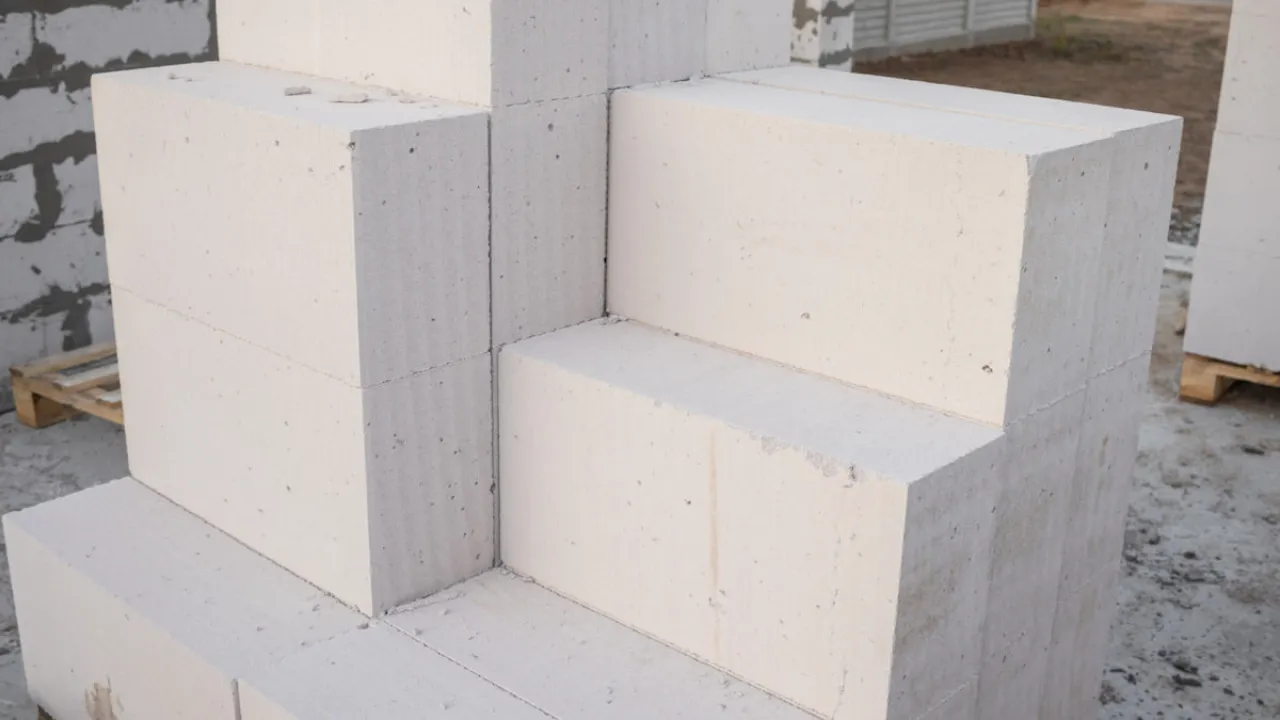Construction materials are increasingly diverse, and one crucial factor in choosing a material is the appropriate size of Hebel (aerated concrete block) for your project's needs. Hebel, also known as lightweight brick, is a modern building material widely used for walls due to its practicality and efficiency.
Hebel not only offers a variety of sizes but also provides advantages over traditional red brick, including lightweight construction, heat resistance, and faster installation.
Whether you are a homeowner, foreman, contractor, or building consultant, understanding Hebel sizes and types is crucial in determining the right material to ensure the quality and durability of your construction.
Choosing the right size Hebel will positively impact the construction process, costs, and the final result of your planned building. To learn more about Hebel, check out this article!
What Is Hebel?
Hebel is a term used for lightweight bricks, originating from PT Hebel Indonesia, the first company to introduce this material in Indonesia, operating from 1995 to 2015. The name Hebel itself is taken from Josef Hebel, a German engineer who developed the concept of lightweight brick mortar in 1945.
This innovation was later continued by Swedish architect Dr. Johan Axel Eriksson, who accidentally discovered a method for making lightweight bricks using an autoclave process.
Hebel lightweight bricks are made from a mixture of quartzite silica sand, cement, water, lime, gypsum, and aluminum powder, which creates air cavities within the concrete, also known as aerated concrete.
This is what makes it known as autoclaved aerated concrete (AAC). In addition to AAC, there is another type called CLC (Cellular Lightweight Concrete), which utilizes protein-based or synthetic foaming agents and cures naturally.
AAC lightweight bricks are white and lighter than CLC, which tends to be gray. Due to their easy installation and good temperature resistance, Hebel is suitable for use in multi-story buildings.
Read also: Wall Plastering: Purposes and Tips for Application
Examples of Hebel Sizes
Hebel, or lightweight bricks, are available in various sizes and can be customized with plastic or stucco boards. Standard Hebel sizes are typically 60 cm long and 20 cm wide, with various thickness options available. Here are some common Hebel sizes:
- Hebel size 60 cm long, 20 cm wide, and 7.5 cm thick.
- Hebel size 60 cm long, 20 cm wide, and 10 cm thick.
- Hebel size 60 cm long, 20 cm wide, and 12.5 cm thick.
- Hebel size 60 cm long, 20 cm wide, and 15 cm thick.
- Hebel size 60 cm long, 20 cm wide, and 20 cm thick.
Thicknesses of 7.5 cm and 10 cm are the most commonly used. In addition to standard sizes, jumbo Hebel units are also available, with a length of 60 cm and a width of 40 cm, in thicknesses of 7.5 cm, 10 cm, 12.5 cm, or 20 cm.
When purchased, Hebel units are usually sold by the square meter or the cubic meter. For standard-sized Hebel units with a thickness of 7.5 cm, approximately 111 units are required per cubic meter, while for a 10 cm thickness, approximately 83 units are required per cubic meter. These two thicknesses yield approximately 8.3 hebel units per square meter.
Hebel Functions
Hebel units are used as walls, partitions, exterior cladding, roof replacements, facades, and even exterior building cladding. This material helps add space without burdening the structure, while also improving interior comfort thanks to its excellent thermal and acoustic insulation. Furthermore, its use also supports energy efficiency and enhances the aesthetic value of buildings.
Hebel Characteristics
Hebel units are lightweight, strong, fire-resistant, termite-resistant, and provide thermal insulation. Their varied sizes and ease of processing make the construction process more efficient and adaptable to needs. Besides being structurally sound, Hebel is also environmentally friendly, making it suitable for sustainable development.
Hebel Advantages
Hebel, also known as lightweight bricks, is gaining popularity in the construction sector due to its numerous benefits. This material is designed to simplify the construction process and deliver optimal results. Here are some of Hebel's key advantages.
1. Completely Protects the Building
Hebel walls have a smooth surface, eliminating the need for thick plaster, and can be painted directly for an exposed look. Besides its pleasing appearance, Hebel also provides complete building protection because its pores absorb heat, maintaining a cool room temperature. This material is also soundproof due to its solid and dense form.
Read also: 8 Terrace Concrete Roof Ideas from Various Materials
2. Faster Installation, Symmetrical Wall Results
Hebel is a popular choice for many people because it is quick to install and its flat surface results in symmetrical walls, making it a highly sought-after material.
3. Has Strength Equivalent to Concrete
Although it is three times lighter than red brick, Hebel has a strength equivalent to concrete because its composition is almost identical. Its lightweight also makes buildings more resistant to earthquakes, making it widely used in high-rise buildings and malls, and it is now also being used for home construction.
Disadvantages of Hebel
Despite its many advantages, Hebel also has several disadvantages that should be considered before use. By understanding these disadvantages, you can determine whether this material is suitable for your construction needs. Here are some of the disadvantages.
1. More Expensive Unit Price
Hebel bricks are more expensive per unit than red bricks; for example, a 60x20x10 brick can cost between IDR 10,000 to IDR 15,000. However, their quick installation saves time and labor costs, allowing Hebel-walled houses to remain affordable without compromising on building quality.
2. Takes Longer to Dry
Hebel walls take longer to dry than brick walls because their surfaces have many separate cavities that trap water and prevent it from evaporating.
Before plastering, the wall must be completely dry to prevent yellow spots, unlike red brick, whose cavities are interconnected and therefore dry more quickly when exposed to sunlight.
3. More Material Scrap and Expensive Adhesive
Large Hebel sizes do speed up installation, but they also result in a lot of scrap that is difficult to use due to its uneven shape. Furthermore, Hebel requires a special adhesive with high adhesion, which makes the wall stronger; however, it is more expensive than regular cement.
That was a complete explanation of Hebel sizes, types, and the advantages that make it a preferred material for various construction projects. By choosing the right Hebel size, you can efficiently meet your building's needs, both structurally and aesthetically.
However, for optimal construction results, it is also important to consider the quality of supplementary materials, such as cement. In this case, Semen Merah Putih Watershield offers a superior solution thanks to its water-repellent technology, which provides three-layer protection against water seepage from outside, inside, and the ground.
This technology helps maintain structural strength and prevents premature damage due to moisture, making it ideal for use with Hebel (cement concrete), plaster, plastering, and concrete roofs.
Planning a home or other construction project? Make sure you use the best combination of building materials, including Hebel (cement concrete) and Semen Merah Putih Watershield.
Contact us now for more information about Semen Merah Putih products and discover the ideal construction solution for your project!
Read also: Understanding Wall Plaster Mix, Check the Right Ratio!



